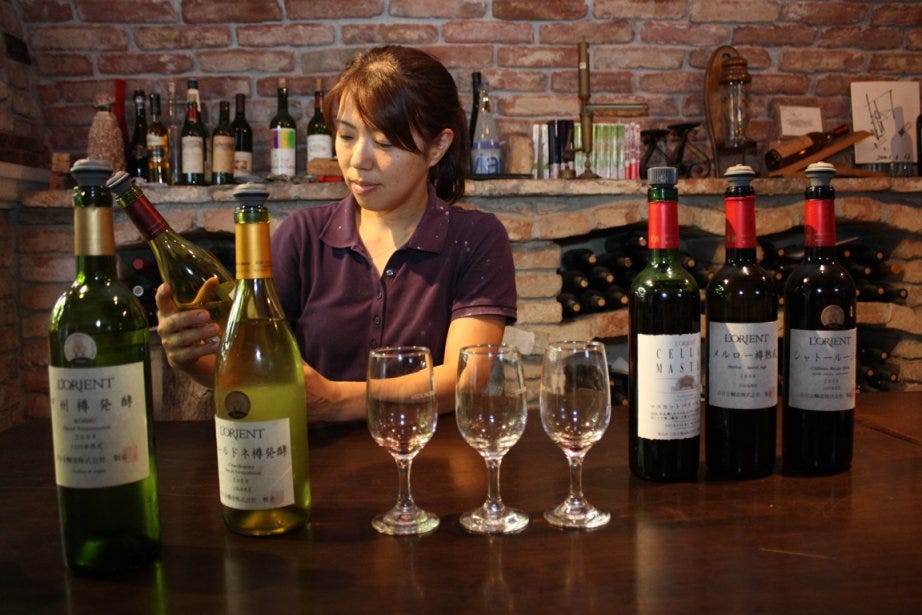Asian Wine Market Growth: Trends, Insights, and Emerging Opportunities
If you're looking to promote your brand to my community of over 19,000 engaged subscribers, feel free to contact me for collaboration opportunities.
Dear Subscribers,
First all, thanks to Changyu company to sponsor this newsletter.
The wine market across Asia is witnessing a dynamic period of growth and evolution. In this newsletter, we dive into the projections, key markets, and emerging trends that are shaping the future of wine consumption in this region. Whether you're an industry expert or a wine enthusiast, the insights below will provide a comprehensive view of what to expect in the coming years.
Market Growth and Projections The wine market in Asia is projected to grow at a steady rate of 2.89% from 2024 to 2029, reaching a market volume of US$27.6 billion by 2029. This expansion presents exciting opportunities for wine producers and distributors to capitalize on changing consumer preferences and market dynamics.
By 2024, the Asia-Pacific wine market is estimated to reach USD 76.91 billion and is expected to grow at a 7.72% CAGR, ultimately reaching USD 111.55 billion by 2029. The region is becoming increasingly important for global wine brands seeking new growth avenues.
Key Markets
Let's take a closer look at the primary markets driving this growth:
China: A Dominant Force
Despite economic challenges, China remains the leading market for wine in Asia. In 2023 alone, China imported 249 million liters of wine—substantially more than any other Asian country. The rise of urbanization, a vibrant nightlife culture, and an eagerness to explore new types of alcoholic beverages continue to fuel demand. Community group buying is also gaining traction, offering opportunities for wine brands to refine their distribution networks.
India: A Growing Market
India’s wine market is transforming from a niche to a more mainstream option. Forecasts predict sound growth between 2023 and 2029, driven by a younger generation’s openness to experimenting with diverse beverages. Wine is increasingly being viewed as a healthier alternative to other alcoholic drinks, aided by its antioxidant properties. Meanwhile, India’s burgeoning wine tourism industry in regions like Nashik and Karnataka is promoting wine culture and expanding consumer interest.
Vietnam: The Next Hotspot
Vietnam's wine market is projected to reach US$692.27 million by 2030, with an impressive CAGR of 10.93%. This market is growing not only in value but also in volume, with wine consumption expected to rise to 24.15 million liters by 2030. Younger professionals are contributing to this trend, favoring wine as a more refined alternative to stronger alcoholic beverages. Imported wines from France, Chile, and Australia dominate, though the market remains price-sensitive, with most sales occurring under US$10 per bottle.
Japan: The Steady Consumer
Japan remains a significant player, with 171 million liters of wine imports in 2023. Younger consumers are showing more interest in wine, with the market evolving at the expense of traditional alcoholic beverages like sake. Japan’s per-capita wine consumption is now triple that of China’s, positioning it as a stable and sophisticated market for wine businesses.
Emerging Markets
While China continues to lead in terms of volume, emerging markets such as India, Vietnam, and Thailand are showing tremendous potential. In 2023, these countries collectively imported over 50 million liters of wine, signaling steady growth. India, in particular, is expected to see increased imports as more consumers adopt wine into their lifestyle.
Changing Consumer Preferences
Across Asia, wine is becoming an everyday beverage, transitioning from its status as a luxury item. Several trends are shaping the market:
Health Consciousness: With a growing emphasis on health, more consumers are opting for wine, perceiving it as a healthier choice due to its antioxidant benefits.
Premiumization: As disposable incomes rise, more consumers are willing to spend on premium wines for both special occasions and casual meals.
Younger Generation: The younger demographic is open to experimenting with flavor-infused wines and innovative alcoholic beverages.
Wine Tourism
Wine tourism is playing an increasing role in market expansion, especially in countries like India. Regions such as Nashik and Karnataka are fostering interest in wine culture, contributing to both domestic and international demand.
Distribution Channels & E-commerce
E-commerce is transforming how wine is sold across Asia. 60% of wine purchases in Vietnam happen through business channels, and online sales are booming across the region. The global wine market's revenue through e-commerce platforms is expected to reach over $14 billion by 2027, opening new avenues for brands to reach consumers.
Conclusion: Tapping into the Potential
With consumer preferences evolving and e-commerce becoming a dominant force, Asia's wine market offers numerous opportunities for brands that can adapt. China remains the key market, but growth in India, Vietnam, and Thailand is accelerating, with these countries expected to play a more significant role in the future.
Stay tuned for more insights as we continue to track trends and provide updates on the latest developments in Asia's wine industry.
If you have any questions, feel free to contact me!
Jean-Charles Letellier
Founder @ Vinifield
Wines | Champagne | Spirits
Mobile: (+33) 06 58 09 40 45
Follow me on LinkedIn
Visit my website
Subscribe to my newsletter






